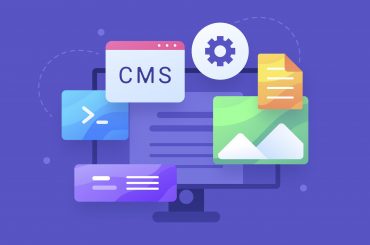How to do Magento 2 Migration Right for SMBs?
Last Updated | July 27, 2023
Table of Contents
Why Magento 2 Migration is Essential?
Magento is a leading open-source eCommerce platform that is written in PHP. Magento was initially released in March 2008, and Magento 2 was released sometime after Magento 1, in 2015. Magento 2 is considered to be a better platform than the two as it is offers improved performance and a more structured code base.
It was officially announced by Adobe (the company that acquired Magento in 2018), that they would not be offering any support for Magento 1 after June 2020. Hence, Magento users were forced to migrate to Magento 2. The Magento 1 to Magento 2 migration is essential to get access to better features, including security, and enhancements, such as advanced SEO, marketing automation, etc.
What is the Right Way of Magento 2 Migration for SMBs?
The migration process is a long, time-consuming process, and can take anywhere between 3 to 6 months. It can even take more than that if there are any glitches encountered, and if you want to redesign the whole store.
Read Also Migrate Prestashop to Shopify
There are three main steps involved in the Magento 2 migration. These steps are:
- Pre-migration
The website’s content is assessed and evaluated to get a better picture of how much time and effort would be required for the Magento 1 to Magento 2 migration. The timeline for each step is defined. This is done with the help of the Definition of Done (DoD). This allows the development company and the business owner to be on the same page regarding the timeline expectations for the new store. With the DoD, there is an end in view.
- Migration
The process of migration begins with creating a testing environment by moving Magento 2 on a new server. Then, all the other content, such as plugins, extensions, etc. are migrated to Magento 2.
- Post-migration
The last step of the migration process involves the synchronization of your order history and customer data from Magento 1 to Magento 2.
A typical migration timeline looks something like this, provided that no glitches take place:
—Planning the migration process: around 3 weeks
—Creating a test environment: 1-2 days
—Extensions and custom development: up to 3 weeks
—Migration of data: 1-2 days
—Magento 2 designing: 2-4 weeks
—Additional synchronization: 1-2 days
—Magento 2 store launch: around 1 week
It is recommended that a store audit is performed before the migration to get a clear picture of the migration process and a realistic timeline.
Even before the Magento 2 migration takes place, certain requirements must be fulfilled before the process starts. These include the following:
- Software and Hardware Requirements
Magento 2 requires specific hardware and software to run. These include the following:
—PHP: 7.0.13+ or 7.1.x
—MySQL: 5.6, 5.7 or MariaDB 10.0, 10.1, 10.2 or Percona 5.7
—PHP extensions: bc-math, ctype, curl, dom, gd, intl, mbstring, mcrypt, hash, openssl, PDO/MySQL, SimpleXML, soap, spl, libxml, xsl, zip, json, iconv
—A minimum of 2G RAM
—24GB+ SSD (Solid State Drive)
- Installation of Magento 2
The Magento 1 to Magento 2 migration is only possible if you have Magento 2 installed. You must have the current version of Magento 2 installed.
What are the challenges you face during the Magento 2 Migration?
The Magento 1 to Magento 2 migration process is not a piece of cake; there are quite a few challenges encountered. A few of the challenges are discussed below.
- Untidy code and weak data structure
If the code for Magento 1 is inappropriately configured, the migration tools and scripts will not read the code and will not work. If there are too many issues with the code and data structure, If there are too many issues with the data and codes, there have been times when there has been a need to reinstall Magento 1 and data has been structured properly, before the Magento 2 migration can take place.
However, this problem can be overcome by conducting a website audit to perform a code review that was overlooked in the previous development phase. After the audit, a decision is made if custom migration scripts are needed or Magento is reinstalled, starting from square one.
- SEO performance after Magento 2 migration
Magento 2 is preferred by most businesses due to the advanced SEO features. The two most important SEO features introduced in Magento 2 are the auto-generation (for setting templates for product metadata) and schema.org (for boosting the search engine ranking of your store).
If the migration from Magento 1 to Magento 2 does not occur, then you could have a negative effect on the rankings of the SERPs (search engine results page). This could be a result of duplicate content, lost pages, broken URLs, and redirects that do not work. Thus, you must get the Magento 2 migration right for SMBs.
This challenge can be overcome by using various tools, that can help in the reformatting of all internal links according to the requirements of Magento 2.
-
Data migration is not a simple process
Data migration from Magento 1 to Magento 2 must be done very cautiously to prevent any data loss during the process. There is a lot of data that has to be transferred- customer and product data, order details, etc.
The process is not as easy as copy-pasting from one platform to the other. It has to be ensured that all data is transferred successfully from Magento 1 to Magento 2. Although it is not a simple process, it can still be done if the correct tools and methods are used. An amalgamation of manual migration, custom migration scripts, and the official Magento Data Migration Tool are used.
- Using extensions in Magento 2
Extensions that have been used in your store in Magento 1 cannot be migrated to Magento 2- they simply won’t work. Therefore, all the extensions used for your Magento 1 store must be replaced with extensions with similar features, designed for Magento 2. This means that you would be getting a second chance to design your store. It would be a better idea to revamp your store, rather than log for similar extensions and themes that are compatible with Magento 2.
Read Also How to Migrate OpenCart to Shopify?
As many users complained about the hassle of migrating extensions, this process has been simplified with the help of new technologies.
What are the Common Issues occurs after the Magento 2 Migration?
Once when the Magento 2 migration has been completed, the business owners are very excited to view their new store. To their disappointment, they might face at least one or more of the following issues.
These issues are:
- Empty Category or Landing Page
- Missing Catalog Images
- “No Such Entity” Error
- Double .html.html in the URLs of Products
These issues can be solved by reviewing the code and commands.
Final Thoughts
The Magento 1 to Magento 2 migration is a complex process and must be done very carefully, with a realistic timeline in mind. If you have the technical knowledge regarding the process of Magento 2 migration, then only you should go ahead with it, otherwise it is highly recommended that you hire a Magento developer for this process.
This would require you to spend some money, but it would be worth it as it minimizes the chances of any data loss during the process.
FAQs:
Is Magento development services affordable for small businesses?
Yes. Small Companies or Businesses can easily afford Magento Development Services by any agency.
Does Folio3 provide Shopify to Magento Migration Services?
Yes. Folio3 provides Shopify to Magento migration services in very reasonable rates all around the world.
How much does it cost to hire a Shopify app development company in the USA?
The development cost of the Shopify store can vary widely depending upon the size and customization options that you want. To give you an idea, a simple and small Shopify store with no customization development cost may cost around $500.
The greater the level of customization you want the higher the cost you may have to put upfront. A reputed and experienced Shopify web development agency may charge you from $5000 to $20,000 for Shopify stores, while the cost may go as high as $100,000+ for extensive projects and a high level of customization.












